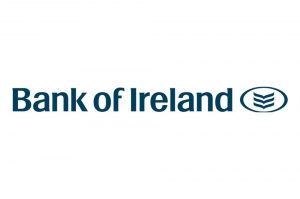
Overview
Section 481 tax relief allows a taxpayer to claim tax relief for an investment made in a qualifying company which has been established to produce either a television series or feature film in Ireland. The investment is structured to allow the tax break to be shared between the film production and the taxpayer. Once you are paying tax at 41% on at least €10,000 of your income you can apply to participate in a Section 481 film investment scheme. The slot sizes usually range from €10,000 to the maximum €50,000 in €10,000 increments.
In 2012 a €50,000 (maximum allowed) investment should yield a return to an investor of up to €3000 for an outlay of €17,500 from personal resources (50,000 – 41% * 50,000) the balance is funded by means of a personal bank loan. If required and subject to standard credit approvals the bank may also fund the equity outlay at personal loan interest rates. Once the €20,500 tax return has been received the loan is repaid and the balance is the direct return (20,500-17,500). Smaller investment amounts will yield proportionately smaller returns for investors.
How It Works in Practice
-
In practice an investor will go to a bank like Bank of Ireland, typically with €17,500 cash to invest. If they are deemed a good risk the bank will lend them €32,500 to bring it up to the maximum €50k. This €50k is used to buy shares in a Special Purpose Vehicle (SPV) created by the production company for each project. This money is available to an ‘eligible’ film from first day of principal photography. And what makes an eligible film? Eligible spend is spend on any Irish or EU citizen/resident while working in Ireland and spend on goods and services purchased in Ireland.
-
Once the investment is made the SPV applies to Revenue for a Film 3 certificate for each investor. This takes about 6 to 8 weeks. If the investor is a PAYE worker they will be issued an amended tax certificate by Revenue after only a few months. The investor receives a tax refund in their payslip of 41% on €50k, which is €20,500 which means they’ve made a €3000 profit on their initial investment of €17,500.
-
So how does the remaining €32,500 plus interest get paid back to the bank?
At the beginning the total amount of loans that will need to be repaid plus the amount of interest they will have accrued after the 12 months is worked out by the production company. The producer then raises funding sourced through channels such as the Broadcasting Authority of Ireland, the Irish Film Board, RTÉ or other funding to pay this total. This exact amount, usually about 72% of the total amount to be raised through S481, is lodged into a special account called a ‘defeasance’ account. Most importantly, this amount has to be in place before S481 funding is sought. The investor’s money (shares) must remain in the SPV for 12 months after which time the SPV will arrange to buy back the shares from the investors with the money in the defeasance account. So after one year, if all goes according to plan, the investor’s loan has been paid off.
-
There is a genuine risk for the investor on the balance because if the film is abandoned or there is a breach of the certificate Revenue have the power to claw back the relief from the investors and require it to be repaid.
So what is the benefit to the producer & the 481 tax relief scheme?
They have to raise funds through private investors and through industry sources (like the Film Board). What is crucial is that the amount that is raised through private investors gives a net 28% budget benefit to productions on their first day of principle photography. So, after successful delivery of the project, the investor is happy, the bank is happy and the production team get their extra 28% in funding available at start of shooting, so they’re happy too.
Requirements
-
Revenue have very strict criteria that productions must meet in order to be ‘eligible’ to ensure as much as possible that everyone wins and the country doesn’t lose out. So what seems like a loss of €20,500 in tax on a €50,000 investment in the short term is actually money well spent as it ensures that most of the film’s expenditure is being put back into the Irish economy.
Here are some examples of what percentage of the total budget can be raised through S481.
-
If we take a production with a €1m total budget, all of which is eligible Irish spend then 80% of that is allowable for S481 funding. So that means that up to 28% of €800,000 (the 80%) can be raised through S481, giving a net benefit of €224,000. In another scenario, a €1m production has only €600,000 which qualifies as Irish spend. As that €600,000 is less than 80% of the total budget, all of the €600,000 is eligible for S481 funding. So up to 28% of this can be raised though S481, with a potential total of €168,000.
-
The definition of eligible spend in S481 leads to the ‘net benefit 28%’ seen in S481 literature,’ explains Mark Byrne, Business and Legal Executive of the Irish Film Board. ‘If you bring an Irish crew to the UK, for example, you can’t claim S481 on that. Paulo Sorrentino, who is directing This Must Be the Place’, he’s an Italian director (and therefore an eu citizen) so for the time he works in Ireland he is eligible spend. But Sean Penn who is the leading actor and American is not eligible spend.’
Paperwork
Revenue issues a S481 certificate, which is a three-page document setting out the conditions, and investors need to see this before they invest. The S481 paperwork is just a part of the legal work that a solicitor firm does on a project. Here are just some of the documents you have to provide:
- Production agreement showing the relationship between the S481 SPV and the production company
- A subscription agreement, which shows what the investors have signed up for
- A payment instruction agreement that upon successful delivery of film that the S481 bank will pay the return to the investors
- Production schedules
- Budgets with Irish and non-Irish spend
- Cashflow charts
- All rights documents
After shooting, an audit is performed to ensure that the money that was earmarked for Irish spend is actually spent in Ireland. If it hasn’t been then the investors may lose their tax break. Producers can spend a number of years after a film is completed dealing with any queries Revenue have with compliance. So how do you ensure that the producer did what they said they would and doesn’t do anything to breach Revenue’s terms? ‘There’s a lot of self-regulation,’ Mark Byrne continues, ‘S481 facilitators rely hugely on a producer’s reputation and they check to see that a producer has consistently delivered S481 projects. S481 is based on completing the physical delivery of a 90-minute film. That film doesn’t have to be very successful but from the Film Board’s point of view, we want the finished film to be what we wanted, that is exploitable and of a certain quality.’
What kinds of projects are eligible?
The incentive applies to feature films, creative documentaries, television drama and animation. It doesn’t apply to commercials, reality TV, game shows or soaps.
‘The UK tax break does not apply to television which is why big budget UK shows such as Primeval are shot here. Also in the UK and US you make the film first, get an audit, send the audit in, get a tax return and 6 months later, if everything is ok you get a cheque back. Here the money is available on the first day of shooting.’
So without having such a competitive tax incentive as S481, it would be highly unlikely that the Emmy Award-winning The Tudors, Camelot, BBC Drama George Gently, and big-budget Hollywood features like King Arthur and Reign of Fire would have been shot here. And the positive effect on Ireland’s economy is hard to quantify because it’s not only encouraging investment and providing employment. Using Ireland as a location also has a very important, recognised effect on our tourism industry.
Paul Donovan of Grand Pictures adds that for the experienced producer, S481 is a huge advantage. ‘At Cannes, for example, you can show that the 20-25% of Irish spend from S481 is going to come through and people understand that, it’s not dependent on subjective criteria such as certain casting.’ Paul’s advice to first time producers is to ‘surround yourself with experienced people, talk to an experienced S481 provider who will talk you through the requirements, have your budget for Revenue as detailed as possible but don’t overcomplicate things.’












